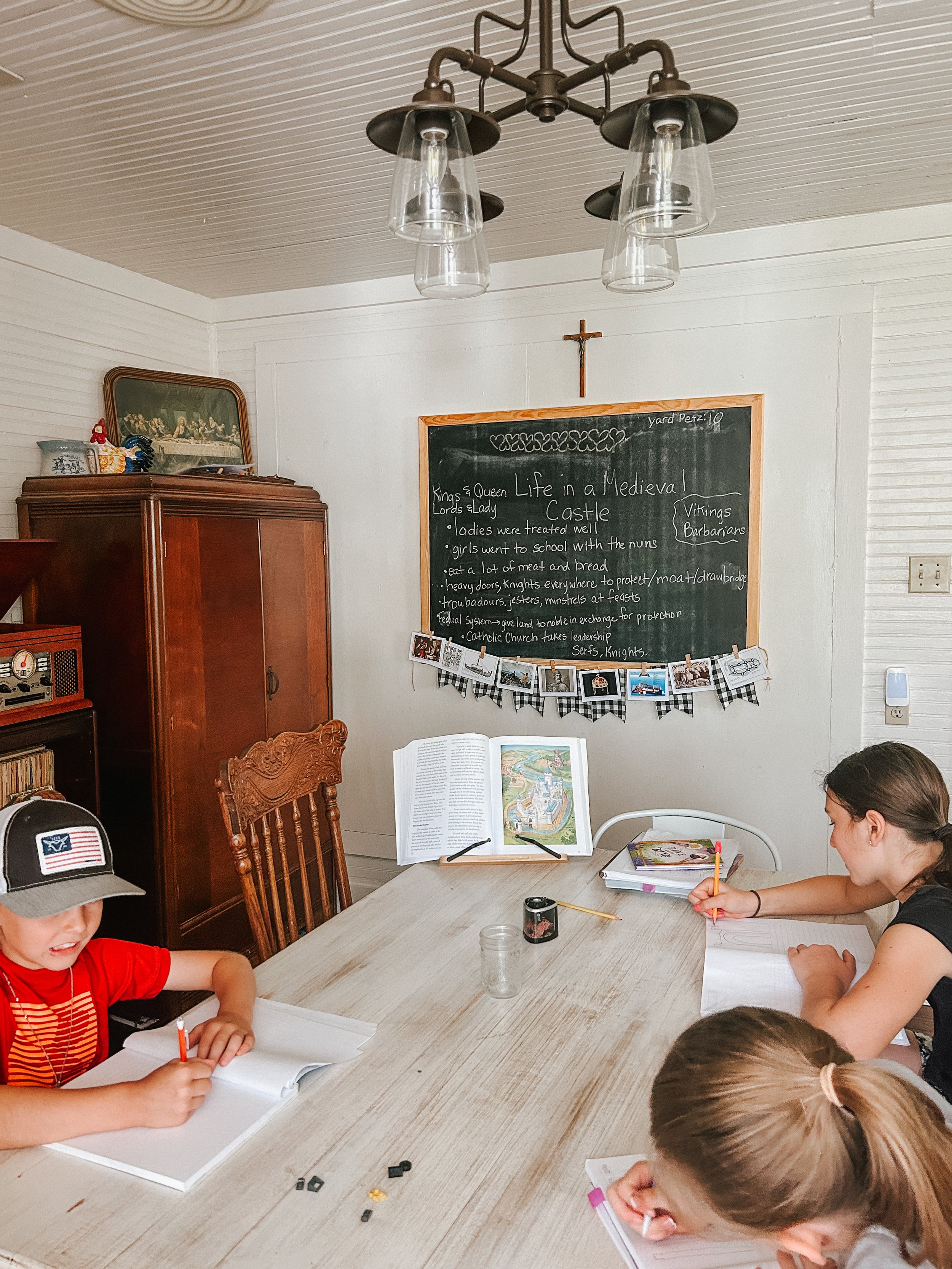How We Use Notebooking in Our Homeschool
Sharing a glimpse of our notebooks after we read more about life in the Medieval Castles, Fedualism and Medieval feasts.
When we first began homeschooling, we homeschooled with a wonderful community that did a lot of notebooking, or at least their version of it. My children had notebooks for subjects such as Poetry, Science, Fables, Bible and lives of the Saints. My days were often spent reading with a child and then having the child write or narrate what they remembered and then illustrating it. I began to notice how much I enjoyed seeing their writings and drawings come to life, and I especially enjoyed seeing how much they comprehended when I read to them. Eventually, we left our hybrid and as I began tackling our own curriculum choices, I realized that notebooking was something I wanted to utilize.
Notebooking is quite the popular term in the homeschool world, especially within the Charlotte Mason homeschool community. In our home our learning style is very eclectic, as we pull from everything from classical learning to Charlotte Mason, and traditional to everything else out there.
Notebooking has a been a way for us to streamline our History studies and soon to be our science studies. With notebooking I am able to avoid having to have individual curriculum or extra workbooks for each child, as the notebook becomes their “workbook” for whichever subject that we are doing. What I love and enjoy the most about notebooking is that we can do several subjects family style, no matter my children’s ages. This cuts down on my having to individually sit with each learner for subjects like history or science.
So what does notebooking look like in our home?
Currently in our home we use notebooking for history the most, but we plan to incorporate it some more next year. Each day I am often reading from some sort of read aloud, picture book, history book or curriculum, and once per week the children are asked to notebook. We may eventually increase the notebooking to twice per week, but right now with younger children, once per week has served us well.
The children are asked to remember what stood out to them about our history readings that day. I find that having the children share key points with me of what they remembered is something that they enjoy (and make into a competition to see who remembers the most), and I write these points on our chalkboard. This gives the kids talking points, but still requires them to organize the thoughts into sentences and paragraphs.
For example, if we read all week about the Roman lifestyle, I’ll ask them to write about life as a Roman and then illustrate it. For younger students who may not be able to write and spell just quite yet, I have the student draw first, and then narrate to me what they remember as I write it down.
Why do I enjoy notebooking over curriculum?
My little guy presenting to his siblings
Curriculum is often going to be worksheets to see what the student retained, and notebooking is just a way to have the students write out all of the information they retained during the readings and discussions. Notebooking allows my children the ability to engage in their imagination; work on their reading comprehension; work on their grammar and writing skills; and allows them the freedom to illustrate. It also provides such a sweet keep sake for us as we work through the year; it provides a sort of journal to look back on that gives the children a beautiful reflection and keepsake of their work.
We also have the children present their notebooking pages to each other and sometimes even daddy. This is to work on their presentation and read aloud skills.
What subjects is this recommended for and how do you use it with Catholic Schoolhouse?
In our home we use this for history, saints, bible and poetry (though we have been most active with the history notebooks). Next year, I plan to do science notebooking to pair with our short units we often use from The Good and the Beautiful that match up with our Catholic Schoolhouse science work. We now also have the new history from The Good and the Beautiful, as well as History or Science from TAN and beautiful books from Seton, all that line up with our CSH studies. We also just love a good picture book! And for my fellow Catholic Schoolhouse families, some days we just print the history worksheets from Basecamp to use in our notebooks for an easy day and something different. You can even play the memory work during their time, or build your notebooking around the timeline cards by having each student pick a timeline card and notebook it. We do this too!
Use notebooking as a new fun way to tackle the studies. I find it to be quite the hidden treasure of homeschooling!
Sometimes we pull worksheets from our Catholic Schoolhouse resources and use this in place of their own illustrations.
PIN US BELOW





